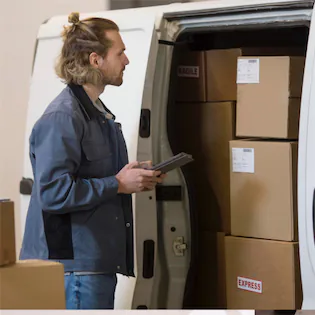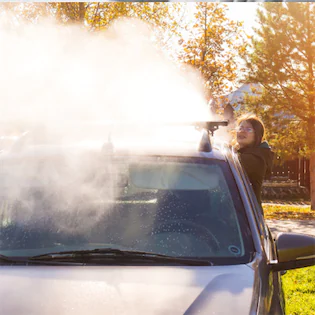California Lemon Law and Manufacturer Buyback: What You Need to Know
In the complex world of consumer protection laws, the California Lemon Law stands out as a crucial safeguard for individuals who find themselves stuck with a defective vehicle. Enacted to provide recourse to consumers who unwittingly purchase or lease defective vehicles, the California Lemon Law offers a pathway to resolution when faced with persistent mechanical issues that compromise the safety, value, or utility of the vehicle.
In the realm of automotive industry jargon, the term “manufacturer buyback” often raises eyebrows and prompts questions. Essentially, a manufacturer buyback vehicle is one that has been repurchased by the manufacturer from the original owner or lessee due to unresolved defects or issues, typically under the provisions of the California Lemon Law or similar statutes in other states.
When a vehicle qualifies as a lemon under the California Lemon Law, the manufacturer is obligated to either replace the vehicle or refund the purchase price to the consumer. In many cases, rather than scrapping these repurchased vehicles, manufacturers opt to address the underlying issues and then resell them in the market as manufacturer buyback vehicles.
California Lemon Law serves as a vital protection for consumers facing the frustration and inconvenience of owning a defective vehicle. Meanwhile, manufacturer buyback vehicles offer an alternative avenue for buyers seeking value and savings, albeit with certain caveats and considerations.
Understanding the California Lemon Law
In simple terms, a “lemon” vehicle under the California Lemon Law is one that has significant defects or issues that substantially impair its use, value, or safety, and which the manufacturer or dealership has been unable to repair after a reasonable number of attempts. These defects may range from mechanical malfunctions to persistent electrical issues, rendering the vehicle unreliable or unsafe for operation.
Qualifications for Protection under the California Lemon Law
New or Used Vehicle: The vehicle must be covered by an active warranty at the time the issues arise, whether it’s a new purchase or a used vehicle with remaining warranty coverage.
Repeated Repair Attempts: The consumer must have made a reasonable number of attempts to have the defects repaired by an authorized dealership or manufacturer. In California, this typically means at least two repair attempts for issues that could cause serious injury or death, or four repair attempts for other issues.
Out of Service Period: Alternatively, if the vehicle has been out of service for an extended period due to repair attempts, such as a cumulative total of 30 days within the first 18 months or 18,000 miles of ownership, it may also qualify as a lemon.
Rights of Consumers with Lemon Vehicles
Replacement Vehicle: If the defects cannot be adequately repaired within a reasonable number of attempts, consumers may be entitled to a replacement vehicle of comparable value and specifications.
Refund of Purchase Price: Alternatively, consumers have the option to receive a refund of the purchase price, including taxes, registration fees, and any other associated costs.
Reimbursement of Expenses: In addition to a replacement vehicle or refund, consumers may also be entitled to reimbursement for certain expenses incurred as a result of the defects, such as towing fees or rental car costs.
How Lemon Law Cases Work
Documentation and Record-Keeping
The foundation of a successful lemon law claim lies in thorough documentation and record-keeping. From the moment issues arise with the vehicle, it’s crucial for consumers to keep detailed records of all repair attempts, including dates, descriptions of the issues, and any communication with the dealership or manufacturer.
Notification to the Manufacturer
Once it becomes apparent that the vehicle meets the criteria for a lemon under the California Lemon Law, the next step is to formally notify the manufacturer of the defects and request resolution. This notification should be sent via certified mail, providing a clear record of the communication.
Resolution Options
Upon receiving the notification, the manufacturer is obligated to address the issues and offer an appropriate resolution. Typically, this involves providing the consumer with the option of a replacement vehicle or a refund of the purchase price.
– Replacement Vehicle: If the consumer chooses a replacement vehicle, the manufacturer must provide a comparable vehicle of the same make and model, or one with similar features and value.
– Refund of Purchase Price: Alternatively, the consumer may opt for a refund of the purchase price, including taxes, registration fees, and any other associated costs. This refund should reflect the diminished value of the vehicle due to the defects.
Arbitration and Legal Action
If the manufacturer fails to provide a satisfactory resolution or disputes the consumer’s claim, the next step may involve arbitration or legal action. Many manufacturers offer arbitration programs as a means of resolving disputes outside of court. However, if arbitration is unsuccessful or not available, consumers have the right to pursue legal action through the court system.
In arbitration or legal proceedings, consumers must present evidence of the vehicle’s defects and their efforts to seek resolution in accordance with the California Lemon Law. Legal representation may be advisable to navigate the complexities of the legal process and ensure the best possible outcome for the consumer.
Manufacturer Buyback Vehicles
A manufacturer buyback vehicle is one that has been repurchased by the manufacturer, typically due to defects or issues that could not be adequately resolved within a reasonable number of repair attempts. Rather than scrapping these vehicles, manufacturers often opt to address the underlying issues and then resell them in the market as manufacturer buyback vehicles.
It’s important to note that not all manufacturer buyback vehicles are inherently flawed or unsafe. In fact, many undergo extensive inspection and repair processes to rectify the defects that led to their repurchase. However, buyers should exercise caution and conduct thorough research before considering the purchase of a manufacturer buyback vehicle.
Reasons Why a Vehicle Might Be Bought Back by the Manufacturer
Persistent Defects: The vehicle may have significant defects or issues that impair its use, value, or safety, and which the manufacturer or dealership has been unable to repair after a reasonable number of attempts.
Safety Concerns: In some cases, the defects may pose serious safety risks to the driver, passengers, or other road users, prompting the manufacturer to repurchase the vehicle to mitigate liability.
Compliance Issues: The vehicle may fail to meet regulatory standards or requirements, necessitating its repurchase by the manufacturer to ensure compliance with applicable laws and regulations.
Disclosure Requirements for Selling a Manufacturer Buyback
In California, there are strict disclosure requirements for selling a manufacturer buyback vehicle. Dealerships or private sellers are legally obligated to disclose the vehicle’s lemon buyback status to potential buyers before completing the sale. This disclosure must be made in writing and prominently displayed on the vehicle’s window sticker, sales contract, or other relevant documents.
Additionally, the manufacturer buyback status must be noted on the vehicle’s title and in the National Motor Vehicle Title Information System (NMVTIS) database, ensuring that the vehicle’s history is readily accessible to prospective buyers.
Pros and Cons of Buying a Manufacturer Buyback Vehicle
Advantages
Potential Cost Savings: Manufacturer buyback vehicles often come with a lower price tag compared to their non-buyback counterparts. Buyers may be able to negotiate a better deal or find a well-equipped vehicle at a more affordable price, making it an attractive option for budget-conscious consumers.
Thorough Inspection and Repair Process: Before being resold, manufacturer buyback vehicles typically undergo extensive inspection and repair processes to address the defects or issues that led to their repurchase. As a result, these vehicles may receive more attention to detail and thorough repairs compared to other used vehicles on the market.
Disadvantages
Stigma Associated with Buyback Vehicles: Despite undergoing repair processes, manufacturer buyback vehicles often carry a stigma associated with their lemon buyback status. Some buyers may perceive these vehicles as inherently flawed or unreliable, leading to challenges in resale value and potential difficulties in selling or trading them in the future.
Limited Warranty Coverage: Manufacturer buyback vehicles may come with limited warranty coverage compared to their non-buyback counterparts. While they may still be covered by the manufacturer’s warranty for a certain period, the warranty coverage may be shorter or come with additional restrictions, leaving buyers with potentially higher repair costs down the line.
Important Considerations for Consumers
Researching the Vehicle’s History
Before committing to a purchase, it’s crucial for consumers to thoroughly research the vehicle’s history. This includes obtaining a comprehensive vehicle history report, which can reveal important information such as past accidents, title issues, and, most importantly, whether the vehicle has been repurchased by the manufacturer under lemon laws. By examining the vehicle’s history, consumers can make more informed decisions and avoid potential pitfalls.
Inspection and Evaluation Before Purchase
A pre-purchase inspection by a qualified mechanic is essential, especially when considering a manufacturer buyback vehicle. This inspection should cover all major components and systems of the vehicle, including the engine, transmission, brakes, suspension, and electronics. A thorough evaluation can uncover any lingering issues or defects that may not be immediately apparent, providing buyers with valuable insight into the vehicle’s condition and potential repair needs.
Understanding Warranty Coverage and Limitations
Buyers of manufacturer buyback vehicles should carefully review the warranty coverage provided by the manufacturer. While these vehicles may still be covered by the remaining manufacturer’s warranty, it’s essential to understand any limitations or exclusions that may apply. For example, certain components or systems may have limited coverage, or the warranty may be voided if the vehicle has been modified or improperly maintained. By understanding the warranty coverage and limitations, buyers can anticipate potential repair costs and plan accordingly.









